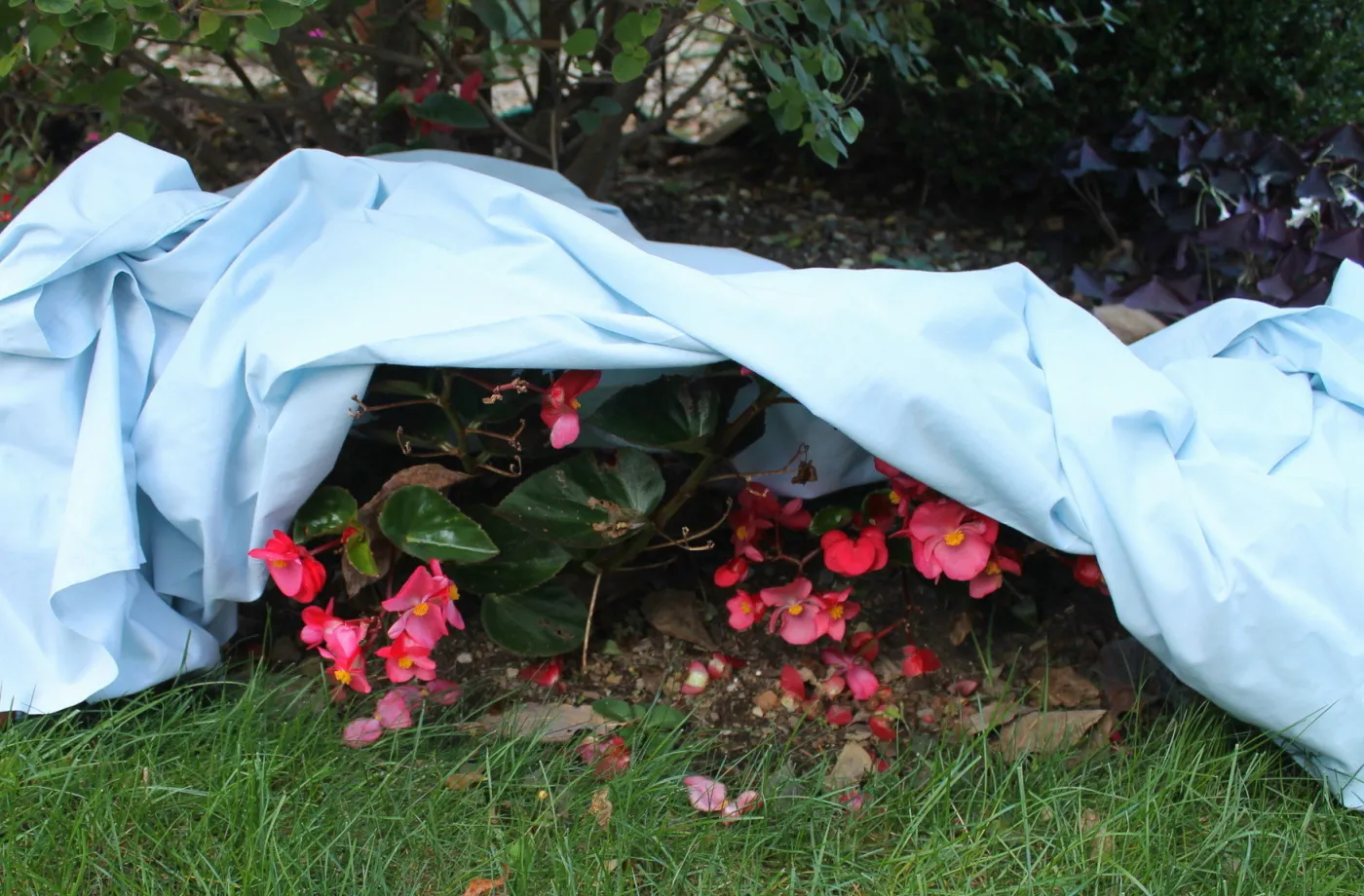Even though Florida experiences moderate winter temperatures, a freeze can still occur. All it takes is one night of exposure to wind and temperatures between 30-40 degrees, and your tender plants or shrubs can receive cold damage without winter plant protection. Here are some tips on what to do before and after freezing temperatures in North Florida landscapes occur.
How To Cover Plants and Shrubs
Covering plants and shrubs that are not cold-hardy is the best way to protect them when a freeze is predicted to happen in Florida. Use cloth, sheets, quilts, burlap, or other coverings you can get from local nurseries made specifically for plants.
Do not use plastic for winter plant protection, for it will cause water droplets from condensation to appear on the leaves, which will result in freeze-burn.
Covers that extend to the ground can lessen cold damage by reducing heat loss. Plants or flowers in containers or pots can be brought inside the house or in the garage. If they must be left outdoors, push them together to reduce heat loss. You can also cover them with proper covering. Remember, when temperatures warm up, to separate them as soon as possible because the leaves can be damaged if left crowded together for a long time.
What To Do After Freeze Has Ended
When the freeze has ended with temperatures returning to normal and the sun shining again, remove covers, for plants need air and light as soon as possible. Any brown leaves will fall off naturally, and new growth should appear when the temperature warms up. If you want to, remove the brown leaves by hand.
After removing winter plant protection, check plants and shrubs for their watering needs. Water as soon as possible. The ground or soil in containers may still have frost, so they will need to thaw out. This helps plants receive water as quickly as possible.
Pruning And Fertilizing Cold-Damaged Damaged Shrubs
Pruning should be delayed until springtime for most tropical landscape plants. When spring arrives, new growth should start, and then you will know that the plant has survived the winter. You can see which woody stems or branches are alive or dead by scraping off the bark with your fingernail. Look for green tissue and prune back dead stems to the point where the green begins, even if it means cutting them down to the base of the plant or shrub. You will know within 30 days if they will survive. Wait until spring to start your Shrub and Ornamental Fertilization program with any high-nitrogen fertilizers.
The Master's is always thinking of ways to help you love your lawn and landscape. One of those ways is ensuring it looks it's best in spite of a cold snap. We hope thiese tips are helpful, adn if we can be of service call us at (352) 378-5296 or (904) 913-5296.


